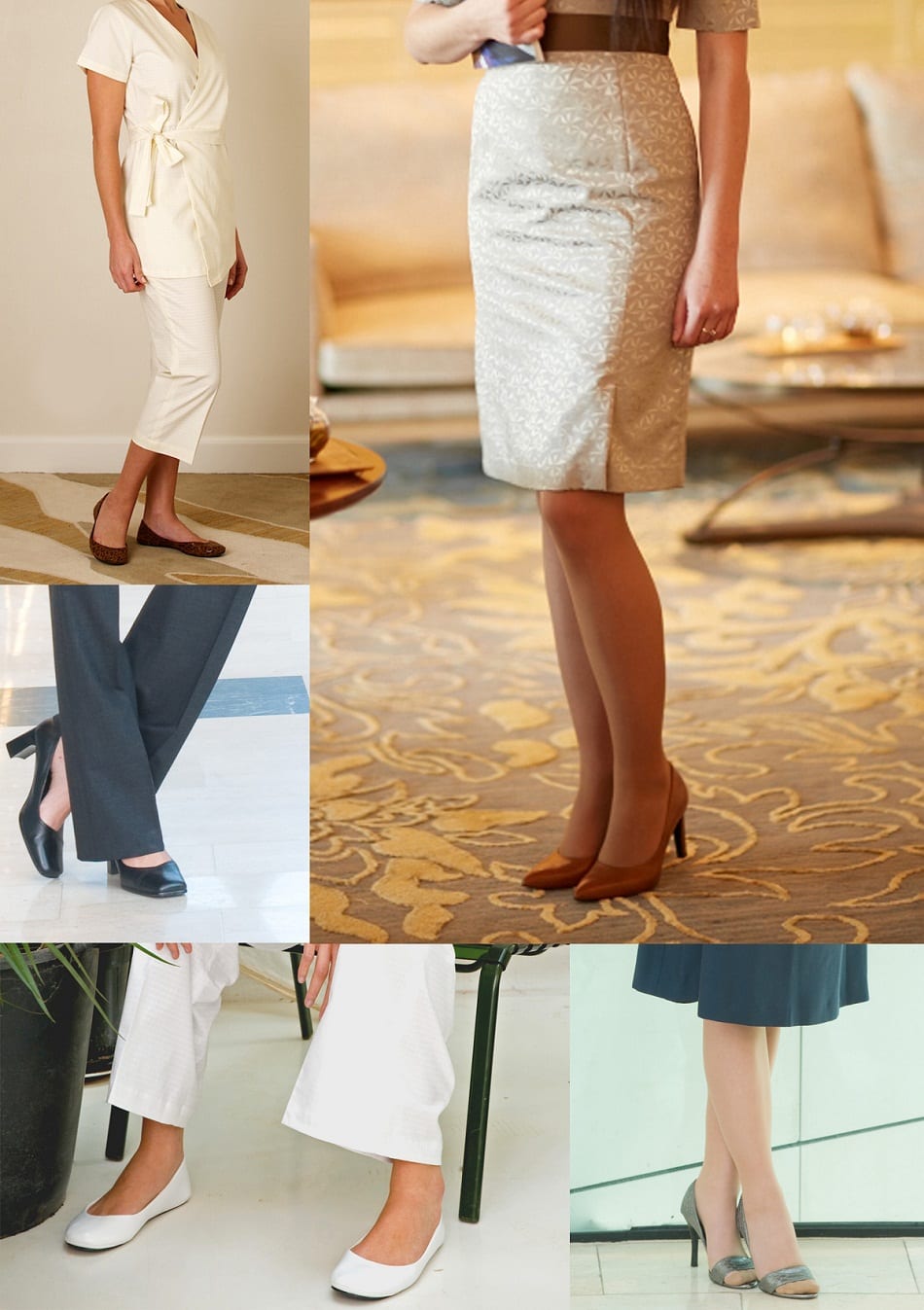
Down at heel or walking tall?
Reading Time: 4 minutesHeels or flats? It is a long-running fashion debate and one which has reared its head again this month with the story of a woman who launched a petition after being sent home from her work as a temporary receptionist because she turned up in flat shoes.
Aside from the fact that it isn’t that difficult these days to get 100,000 signatures and a debate in Parliament, the issue of high-heeled shoes, has resonance for us at Fashionizer. Dress code and image are very important to our luxury hospitality customers. That also means shoes and we have been increasingly asked to provide matching and appropriate footwear as part of a uniform programme. If a client wants to portray an image that is sleek and classy, this may mean pencil skirts – and that then begs the question: Can you wear a pencil skirt with flat shoes? No-one can seriously expect to be greeted at a five-star hotel by someone in an elegant dress – and trainers.
In our expert opinion it is all about environment, and it largely depends what business you are in. Would the iconic Virgin Atlantic uniforms look as good if the female cabin crew were in red flats? On the other hand, how would high heels look in a spa environment, for example. Very out of place, we’d say.
Another airline, British Airways recognises the challenges and potential hazards of negotiating a trolly full of hot food down a narrow aisle. BA expects cabin crew to have two pairs of shoes, one high-heeled pair for the check-in side, then a practical, low-heeled pair for wearing on the plane. It is perhaps a little cheeky that the crew have to pay for both pairs themselves: at Fashionizer we advise clients that, if they want their team to wear a specific style, then it is the employer that should pick up the tab as they do the rest of the uniform, or subsidise the shoe choice.
We would be the first to acknowledge that fashions change and that rules about what you can and cannot wear in the workplace change too. It’s not that long ago that women couldn’t be seen outside the house without a hat – or even a waist-cinching corset. It is no surprise, then, that recent research has shown that women are buying more flat shoes than ever before.
You only need to look around. One-person poll of shoes-on the-tube this morning revealed only three pairs of heels amid the 50 or so women in the carriage: one pair of sandals, two pairs of boots and none of them stilettos or courts. What this on-the-spot research did not reveal is how many people actually had a pair of heels in their bag to change into when they got to work – but swapping from one to another has its own health risks according to scientists.
Legislation in favour of flats could create a whole set of complexities for the hospitality business. Yes, there is enough clinical evidence to suggest that wearing high-heeled shoes can cause a range of conditions from hammer toes to back pain. There are also injuries that are specifically caused by falling off heels or tripping up, not to mention the risks of a hapless bystander who may experience the excruciating pain of finding their foot under someone else’s stiletto (not requested as a uniform choice so far by any of our clients, but you never know). The case for high heels is only focussed image reasons: better looking legs, smaller feet, looking taller (although to be fair, if you are already a 6-footer, that might not be a good thing).
But it doesn’t always follow that flat shoes are better for your feet. Flats cover a whole range of footwear, and the heel-free category of shoes stretches from trainers through to boots, sandals, ballet shoes and flip-flops. Shoes that allow no ventilation or provide no support for your foot can be as damaging as a high heel in the long-term.
But there are some lines that cannot be crossed, ever, however much fashion changes. That line is very clear: men in flip-flops in the office. Hairy toes at work? That’s got to be worth a petition.
Comments: 0




